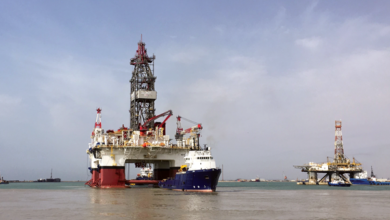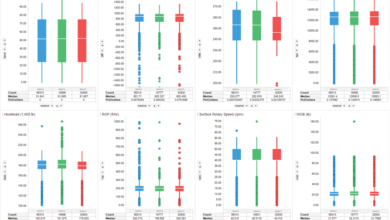HSE&T Corner: Hubler: Organizations must lower tolerance for exposures and risks to reduce occurrence of serious injuries and fatalities
By Kelli Ainsworth, Associate Editor

Traditional approaches to oilfield safety focus on reducing minor incidents, like finger injuries and chipped teeth. The belief is that, by eliminating the unsafe conditions or actions that cause these types of injuries, serious injuries or fatalities (SIF) will also be reduced. Such traditional approaches to safety have enabled the drilling industry to reduce its overall total recordable incident rate (TRIR) and lost-time incident (LTI) rate by 90% over the past 25 years. Yet, serious injuries are comprising an increasing share of the industry’s incidents, Warren Hubler, Vice President of HSE for Helmerich and Payne (H&P), said. The traditional approach has taken the industry this far, but a new approach is needed to get the industry to zero, he said at the 2017 IADC Drilling Onshore Conference on 18 May in Houston.
In the past, approximately one out of every five OSHA recordable injuries was serious or disabling. Last year, the ratio of serious injuries to OSHA recordables increased to one in every 3.5 incidents. “Focusing on reducing injury events and OSHA recordable fingers and chipped teeth injuries is not addressing what’s killing our people and putting them at greatest risk,” Mr Hubler said. Instead, he urged the industry to focus on reducing, controlling and removing exposures that could cause serious injuries and fatalities. This, he said, can be achieved by building company cultures that do not tolerate risk and exposure.
Between 2010 and 2014, while H&P’s TRIR remained low, hovering around 1.0, Mr Hubler said that the number of severe incidents began to rise. To address this, the company conducted an SIF study of a total of 362 events from 2014 and the first half of 2015. The study found that 30% of these events had the potential to cause a serious injury or even death. Further, the study identified the primary SIF exposures as dropped objects, caught-between or struck-by, uncontrolled pressure releases, falls from heights and motor vehicle accidents.
Eliminating these SIF exposures will require a top-to-bottom cultural change that must be driven by leadership, Mr Hubler said. “It’s not just about the unsafe acts and the adverse behavior of our employees. It’s also about unsafe conditions. I’m talking about the pressure exerted by us asking ‘How long is that going to take?’ and ‘Are we done yet?’” The company’s leadership and supervisors must take an active role in creating a culture that does not encourage or accept exposure tolerance, he added.
For H&P, Mr Hubler said, safety isn’t about the absence of recordable injuries or declining TRIR. It’s about controlling and removing exposures. At the management level, this means actively listening and communicating with employees, providing feedback and recognition and building trust. “To do that, you have to be present,” he said. Further, he urged managers to give their direct reports the opportunity to assess the managers on these behaviors to drive improvement.
At the supervisor level, key behaviors and competencies for creating a strong safety culture include sharing feedback and success stories, actively engaging the crew in job safety briefings, keeping a lookout for physical hazards and unsafe conditions, and verifying compliance with life-saving rules. Most importantly, Mr Hubler said, supervisors shouldn’t just preach safe practices but demonstrate them. “Supervisors are the most important safety manual your employees will read,” he said. “We can teach the core processes, and we can teach standards and guidelines. But if those principles are not reinforced by supervisors in the field, those employees are going to adopt the behaviors they see modeled at the rig site.”
Devoting more attention to near-misses with SIF potential, versus minor injuries, is also a key way to reduce exposure and risk, Mr Hubler said. More people and time should be devoted to investigating an SIF potential event than a minor injury, but that’s not always the case, he added. Often, if no one is injured in an incident, it is under-investigated, even if the potential outcome of the event could have been serious, if not for luck. “Then, it becomes the quality of our investigations and the quality of our corrective actions – and here’s where management comes in – the timeliness, the effectiveness and the resources that we dedicate to closing out those corrective actions across every rig in the fleet where it applies.” DC



